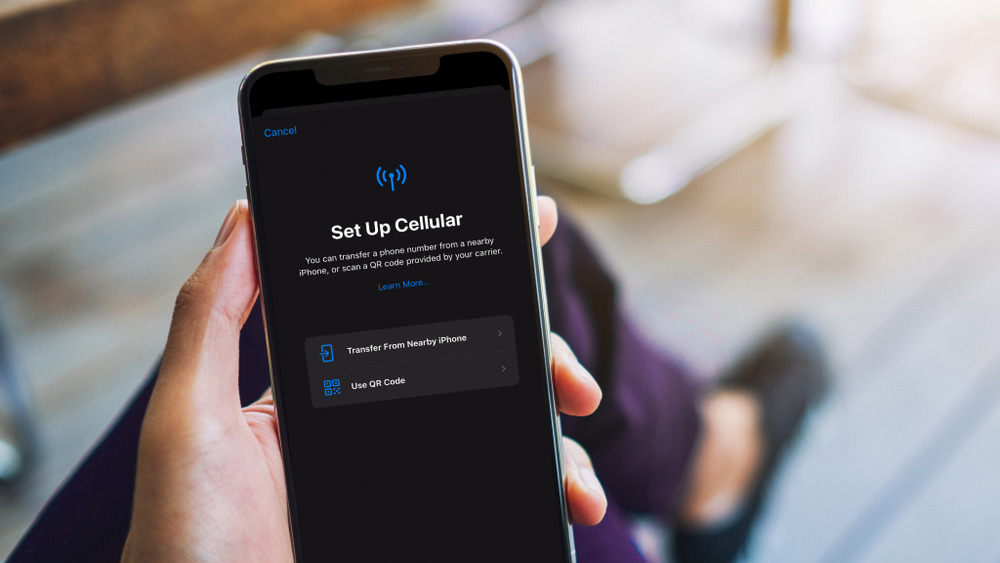
Thinking about getting your own phone plan? Is that a great beginning for an independent life? Transitioning to your own phone plan can offer a host of benefits, including the freedom to manage your data usage, choose features that suit your needs, and ultimately take control of your own phone service. However, before you take a decision it’s important to understand the steps involved in making this transition. In this article, we will guide you through the process of how to get off the family phone plan and provide you with valuable tips to ensure a smooth transition.
Before You Fly the Coop: Planning and Preparation

Thinking of how to get off the family phone plan and starting to venture out on your own, some planning and preparation are crucial. This ensures a smooth transition and avoids unexpected costs or connectivity issues.
Discovering the Detailed Analysis of Family Plans vs Individual Cell Phone Plan 2024
Assess Your Needs
Before diving into plans, let’s break down your mobile habits first. This is your key to finding the perfect fit! Consider your typical data usage, talk time, and texting habits. Do you stream videos and music constantly, or are you mainly a talker and texter? Understanding your usage patterns will point you toward the best plan for you.
Additionally, evaluate whether a phone upgrade is necessary. If your current device is outdated, having battery issues or no longer meeting your needs, factor in the cost of a new phone when considering your options. It’s important to strike a balance between functionality and affordability.
Researching Phone Plans

Once you’ve got a handle on your phone habits, it’s time to explore the exciting world of phone plans! Here’s how to navigate the options and find the perfect fit:
- Compare Carriers and MVNOs: Dive into the offerings from major carriers (like Verizon, AT&T, and T-Mobile) and Mobile Virtual Network Operators (MVNOs) like Mint Mobile or Cricket Wireless. MVNOs operate on existing networks but often offer lower prices.
- Data Needs: Match your data usage to the plan’s data allowance. If you’re a data addict who streams constantly, prioritize plans with generous data caps (unlimited or high data allowances). But if you primarily use Wi-Fi and your phone for calls, texts, and light browsing, a smaller data allowance (around 3-5GB) might suffice.
- Network Coverage: This is crucial! Check the coverage maps of different carriers to ensure you have a strong signal where you spend most of your time (campus, apartment, hometown, etc.). Spotty coverage can be a major frustration, so prioritize carriers with good reception in your area.
- Read Reviews: Don’t underestimate the power of customer reviews! These can give valuable insights into a carrier’s customer service, network reliability, and hidden fees.
- Prepaid Plans for Budget-Conscious Users: Consider prepaid plans for carriers like AirVoice Wireless if you’re a light data user with a tight budget. These plans offer a set amount of data for a set price, allowing you to manage your spending and avoid overages. This can be a great option if you have predictable usage or want to avoid contracts.
Financial Considerations

As a part of how to get off the family phone plan, ensure that you can afford the monthly cost of your own plan. Consider the plan price and any additional fees or taxes that may apply. It’s crucial to budget properly to avoid financial strain.
If you decide to upgrade your phone, factor in the cost of a new device. Whether you choose to pay for the phone upfront or opt for a monthly installment plan, make sure it aligns with your budget. By considering these financial aspects in advance, you can make a well-informed decision and avoid any unexpected expenses.
Taking Flight: The Transition Process

Communicate with Your Family
Once you’ve done your research and made your decision, it’s important to communicate with the owner of the family plan. Explain your reasons for wanting to leave and assure them that it’s not a reflection of their decision to have a family plan. Offer to help pay your share of the plan until you transition, to maintain a fair and amicable arrangement.
Contacting Your Carrier
Next, get in touch with your carrier and inform them clearly of your intention to leave the family plan. They will guide you step by step on how to get off the family phone plan in detail. This can be done through their customer service hotline, online chat support, or by visiting a physical store.
Remember to ask about any fees that may be associated with removing your line from the plan. Normally, leaving a plan might involve some fees. These fees are typically charged to compensate the carrier for any early termination of a contract.
Furthermore, if you’re currently under contract with the carrier, leaving the plan might require fulfilling that obligation first. This could involve paying an early termination fee (ETF) or waiting until the contract expires. The representative can explain the specific terms of your contract and any associated fees.

Additionally, if you plan on using your current phone with a different carrier in the future, you might need to have it unlocked. Most carriers lock phones to their network when purchased with a contract. Inquire about unlocking options and any fees associated with it. Some carriers might unlock the phone for free upon fulfilling your contract, while others might charge a fee.
Activating Your New Plan
Lastly, to complete the process of “how to get off family phone plan”, it’s time to activate your new plan.
- Carrier Activation:
- Most carriers allow you to activate your new line online or through their mobile app. They’ll typically guide you through the process, which may involve entering your account information, SIM card details (if provided), and agreeing to the service terms.
- Alternatively, you can visit a physical store of your chosen carrier. A representative can assist you with the activation process and answer any questions you might have.
- Phone Compatibility:
- Before diving into activation, ensure your current phone is compatible with the new carrier’s network. Carriers use different network technologies (like GSM or CDMA) and frequencies. Check your phone’s manual or the carrier’s website for a compatibility checker tool.
- If your phone isn’t compatible, you’ll need to purchase a new phone that works on the new network. Some carriers offer deals or bundles that include a new phone with your plan.

- Transferring your existing phone number
- Benefits of Porting:
Transferring your existing phone number (also known as porting) allows you to keep the familiar number you’ve shared with friends, family, and professional contacts. This avoids the hassle of informing everyone about a new number. Most carriers make porting a smooth process, but there might be a one-time porting fee involved.
- Porting Process:
You’ll typically need your account number and porting authorization code from your old carrier to initiate the transfer during the activation process with your new carrier. The porting process usually takes 1-2 business days, and you’ll receive notifications from both carriers to keep you updated.
Be sure to follow the instructions provided by your new carrier to complete the activation process smoothly.
Landing Gear Down: Post-Transition Tips
- Track Your Usage
Now that you are on your own phone plan, it’s crucial to stay within your data limits to avoid overage charges. Monitor your data usage regularly and adjust your habits if necessary. Many carriers provide apps or online tools that allow you to track your usage in real-time. By staying vigilant, you can maintain control over your data usage and avoid any unexpected charges.
- Managing Your Budget
To ensure a seamless experience, set up automatic payments for your phone plan. This will help you avoid late fees and ensure that your bill is paid on time each month. By automating your payments, you can focus on enjoying your newfound independence without the worry of missed payments or penalties.

- Explore Additional Features
Now that you are managing your own phone service, take the opportunity to explore additional features that may enhance your experience. Consider options such as mobile hotspot functionality, which allows you to share your phone’s data connection with other devices. If you frequently travel internationally, explore international calling options or roaming packages that can save you money while staying connected abroad. Customizing your phone plan with features that align with your needs ensures that you are getting the most out of your service.
Conclusion

Transitioning from a family phone plan to your own can be an exciting and empowering experience. By planning and preparing in advance, researching different phone plan options, and effectively communicating with your family and carrier, you can make a smooth transition. Remember to track your usage, manage your budget, and explore additional features to fully embrace your newfound independence.
Are you ready to take control of your phone service? Join AirVoice Wireless, where you’ll find a wide range of data plan choices at affordable prices. Bring your own device and port in your current number easily without any additional fee, visit www.airvoicewireless.com to learn more and get started today!




Leave A Comment